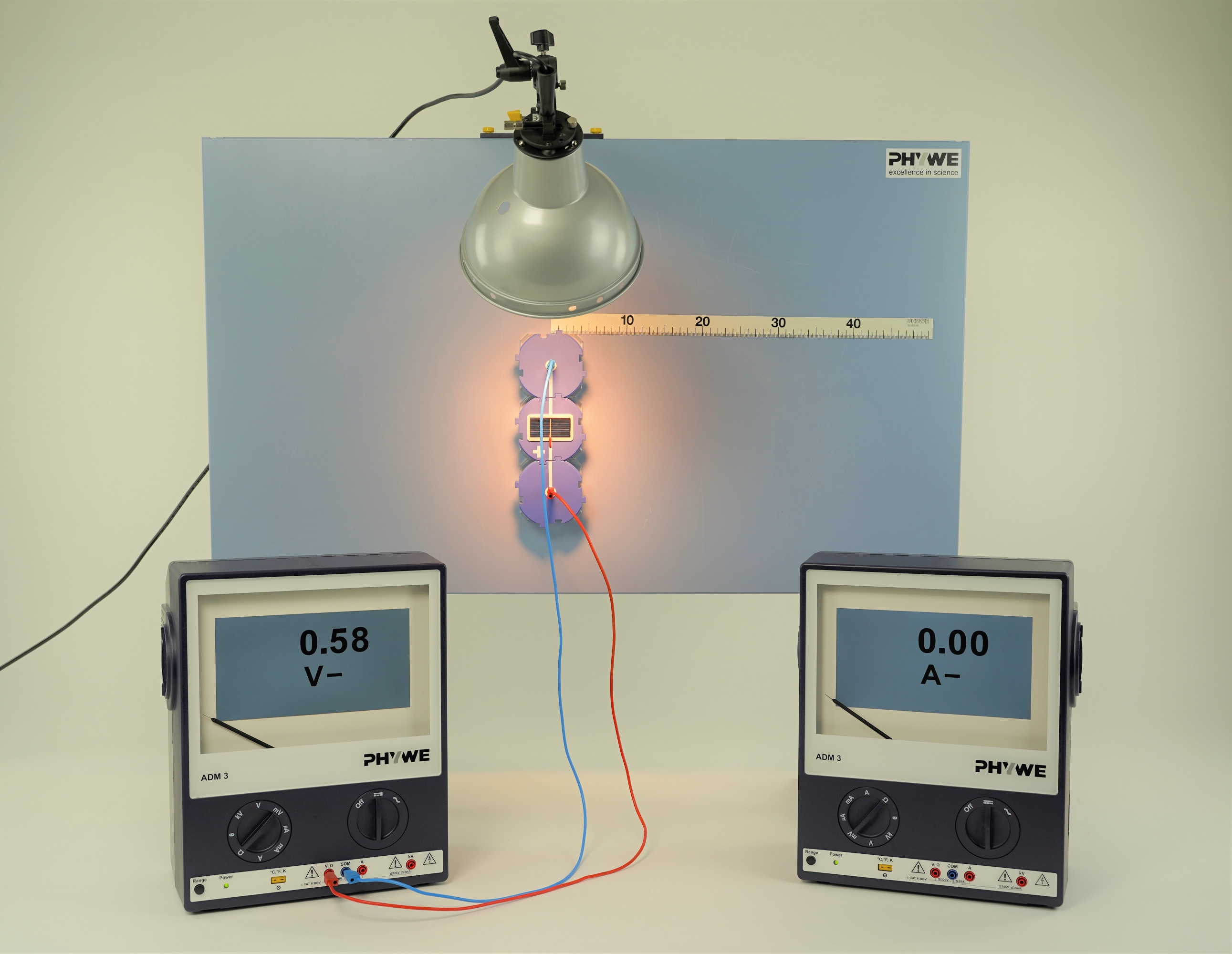Principle
Solar cells convert solar energy into electrical energy. The maximum achievable voltage or current determines their possible applications. The maximum voltage of a solar cell is the open circuit voltage U0 at which there is no resistance in the circuit (resistance = ∞). The maximum current is the short-circuit current IK. It is reached when the resistance is zero, i.e. there is only one lead wire ("short circuit") in the circuit. In the experiment, the open-circuit voltage and short-circuit current strength are first examined as a function of the illuminated area of a solar cell. Then the solar cell is moved on the panel to change the light intensity and then these two quantities are also determined.
Benefits
- Part of a system solution - easily expandable for further experiments
- Simple teaching by using the demo board physics
- Clear test execution by using ADM3 multimeters
Learning objectives
- The students investigate the electrical power and work on energy conversion on a solar cell.
- The students observe the loss of power on solar cells that heat up.


